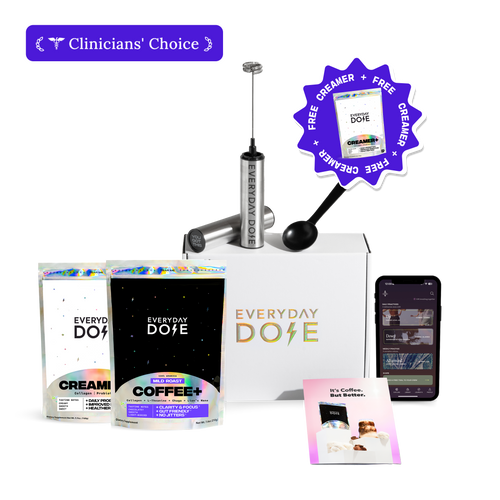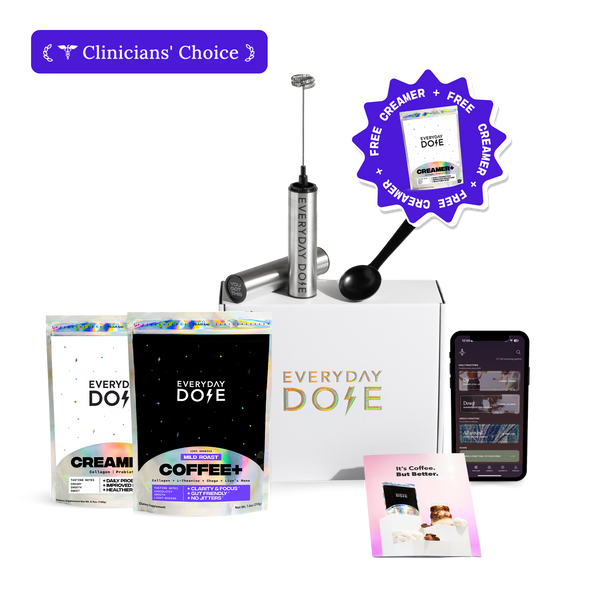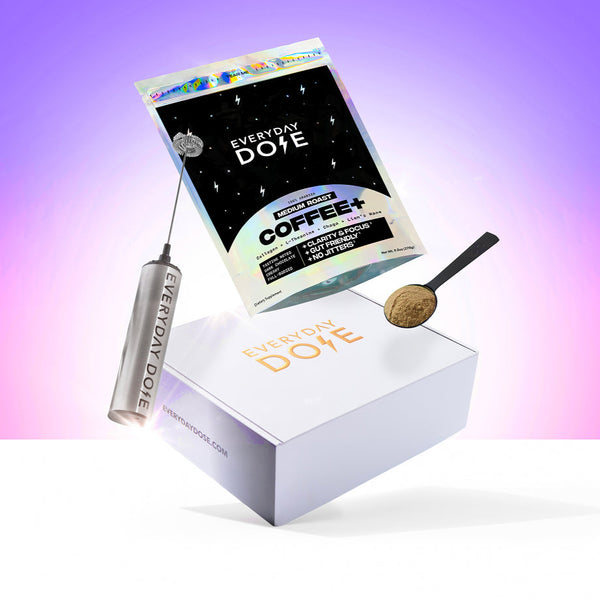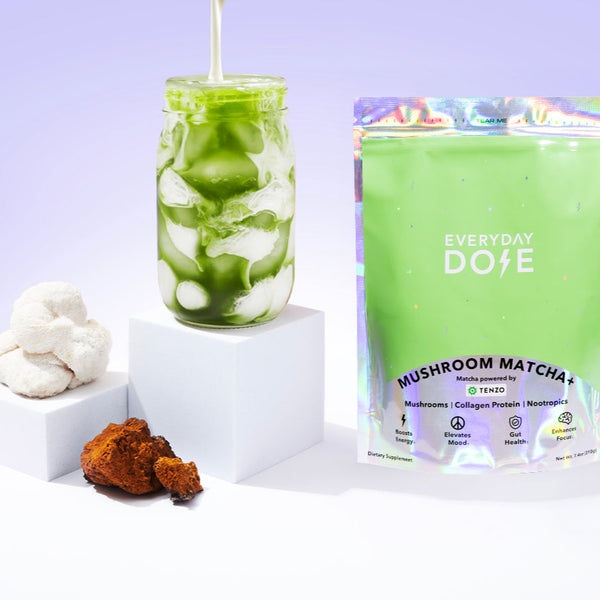Coffee and Antioxidants: Everything To Know

Coffee is well-known for its caffeine content, but it’s also a huge source of antioxidants in the modern diet. That’s almost as amazing as its ability to pair well with literally every breakfast food, ever.
However, you aren’t guaranteed the same antioxidants in every cup — roast level, brewing style, and even what you stir into your mug can all play a role. In this article, we’ll discuss the main antioxidants in coffee, what affects them, and how you can increase the antioxidant potential in each cup.
Why Are Antioxidants Important?
Antioxidants are basically what keep your body healthy for the long haul. Every day, your cells produce unstable molecules called free radicals.
Free radicals are missing electrons, and they’ll steal electrons from other molecules in your body to stabilize themselves. Unfortunately, this causes a chain reaction of damage that can spread like wildfire. This damage is called oxidative stress, and it’s one of the main drivers behind things like cognitive decline, visible aging, and other health concerns.
Antioxidants act like fire extinguishers, neutralizing those free radicals before they cause damage. And boy, does coffee contain a ton of them. For a lot of people, coffee is their main source of antioxidants, simply because they consume more of it than they do green tea, berries, or kale smoothies.
What Are the Antioxidants in Coffee?
If you’re anything like us, you probably want to know more of the scientific details. Why do the antioxidants in coffee work so well? What are they called, and what do they do? You have questions, and we have answers.
Chlorogenic Acids (CGAs)
Chlorogenic acids are the main event of coffee’s antioxidant lineup. These polyphenols help neutralize free radicals and may even play a role in regulating blood sugar by slowing glucose absorption. Beyond antioxidant activity, CGAs are being studied for their potential anti-inflammatory effects, which can have even more widespread benefits.
Caffeic and Ferulic Acids
Caffeic and ferulic acids might not have the same name recognition as CGAs, but they’re just as important. Both are phenolic acids that scavenge free radicals, helping reduce oxidative damage in cells. Ferulic acid, in particular, can protect lipids and cell membranes, which keeps things running smoothly at the microscopic level.
Melanoidins
Melanoidins are flavorful byproducts of roasting. The same Maillard reaction that gives coffee its rich aroma also creates these antioxidants. They’re great at fighting free radicals, but they’ve also been studied for their ability to support gut health by encouraging a diverse gut microbiome.
Trigonelline
Trigonelline is a fascinating little alkaloid found in green coffee beans that partly breaks down during roasting into the compounds that add aroma and flavor. It doesn’t vanish, though. It sticks around to deliver antioxidant effects and has been studied for supporting metabolic and cognitive health.
Does Roast Level Change Antioxidants?
Yes, it does — a lot. Light roast coffee tends to hold onto more chlorogenic acids. As beans roast darker, some of those acids break down. As they break down, these compounds create melanoidins.
The darker the roast, the more melanoidins you’ll find. Think of it as a swap: you lose some of the original antioxidants but gain different ones.
Studies suggest that very dark roasts may end up with fewer antioxidants overall compared to lighter roasts, but the difference isn’t night and day. Basically, choose the roast you enjoy most, because both are still offering antioxidant support.
Can You Add Antioxidants to Coffee?
Absolutely! While coffee already comes loaded with antioxidants, you can upgrade your cup even further. For instance, a splash of vanilla extract or almond extract can add both flavor and extra antioxidants like vanillin and vitamin E.
Another great way to add antioxidants is to drink mushroom coffee. Our Mushroom Coffee+ blends collagen, L-theanine, lion’s mane, and chaga mushroom. Chaga is famous for its incredibly high antioxidant content — some studies suggest it even outshines blueberries and acai berries.
And yes, collagen, lion’s mane, and L-theanine also have their own antioxidant powers. But these compounds also have many other benefits. Basically, you can reinforce your body’s defenses against oxidative stress while also encouraging extra focus, gut health, and a good night’s sleep.
Why Brewing Method Matters
How you brew your coffee is just as important as what’s in the beans. Hot brewing generally extracts more antioxidants than cold brew, especially from darker roasts, because heat helps pull more polyphenols into your cup.
Espresso, thanks to high pressure and fine grounds, packs a concentrated punch of antioxidants in a tiny shot. On the flip side, cold brew is smoother, lower in acidity, and keeps some antioxidant activity intact, making it a delicious option for summer sipping.
The point is that your brewing method shifts both the taste and the antioxidant load, so if you want the maximum bang-for-brew, hot and filtered is often the sweet spot. Still, don’t stress — no matter how you take your coffee, you’re still getting more antioxidants than you’d get without drinking it.
Does Decaf Contain the Same Antioxidants?
While the decaffeination process can reduce certain compounds, most of the key antioxidants, like chlorogenic acids, remain. In fact, studies show that decaf often retains a large share of its antioxidant activity, meaning you still get those free-radical-fighting benefits without the caffeine buzz.
That makes decaf a smart choice for anyone sensitive to caffeine or sipping late at night. The only big difference is that you won’t get the mental boost from caffeine — but if it’s nighttime, that’s kind of the whole point.
The Bottom Line
Coffee might be your go-to for early mornings, but it also moonlights as a daily dose of antioxidants that help your body stay balanced and protected. From chlorogenic acids in lighter roasts to melanoidins in darker ones, every cup offers a unique mix of benefits.
Your brew method, roast choice, and even functional options like our Mushroom Coffee+ can all affect the final amount of antioxidants in your cup. And if you want even more tips on how to support your health from the inside out, visit the Everyday Dose blog today.
Sources:
Oxidative Stress: Harms and Benefits for Human Health | PMC
Roles of Chlorogenic Acid on Regulating Glucose and Lipids Metabolism: A Review | PMC
Gut Microbiota Modulation by Dietary Barley Malt Melanoidins | PMC
A study of chemical Composition, Antioxidants, and volatile compounds in roasted Arabic coffee | PMC
Start your day
The Right Way









